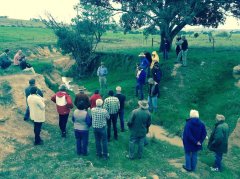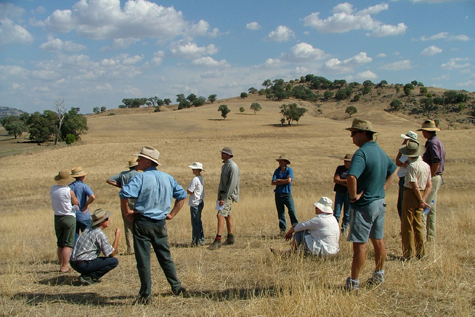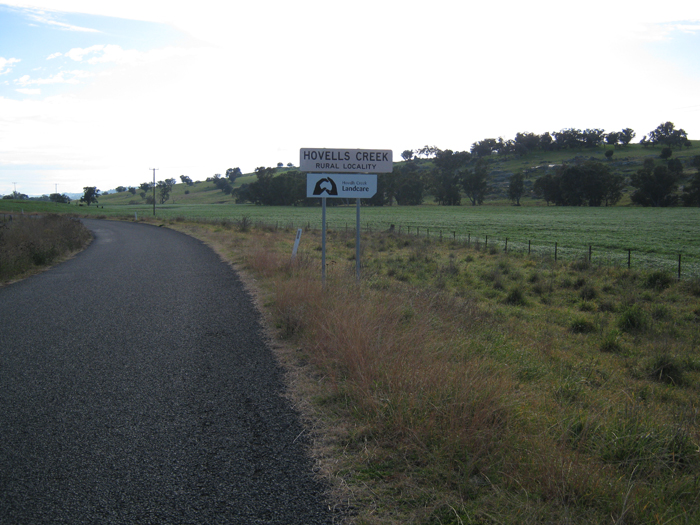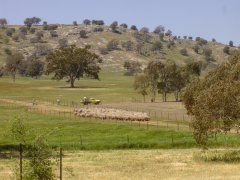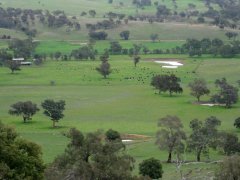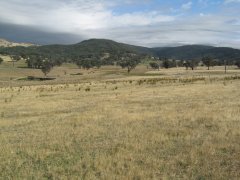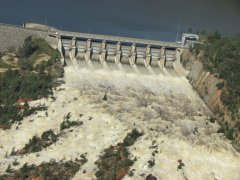Main
Threatened species of Fauna and Flora within the K2W Corridor (NSW OEH 2013)
|
FAUNA |
SPECIES |
HABITAT REQUIREMENTS |
|
Amphibians |
Sloane’s Froglet |
Shallow wetlands with low emergent vegetation |
|
Birds |
Spotted Harrier |
Open grassland and large trees for nesting |
|
Little Eagle |
Open grassland, scattered woodland and large trees for nesting |
|
|
Black Falcon |
Open grassland and large trees including paddock trees for nesting |
|
|
Square-tailed Kite |
Large patches of woodland with large trees for nesting |
|
|
Gang-gang Cockatoo |
Forest and woodland with large hollow-bearing trees |
|
|
Glossy Black-Cockatoo |
Forest and woodland with large hollow-bearing trees and stands of Allocasuarina littoralis foraging habitat |
|
|
Little Lorikeet |
Woodland and paddock trees with nectar rich eucalypts and trees with hollows |
|
|
Swift Parrot |
Forest, woodland and paddock trees with nectar rich eucalypts |
|
|
Turquoise Parrot |
Woodland with hollow-bearing trees and paddocks with stumps and hollow bearing trees close to edge of woodland |
|
|
Superb Parrot |
Woodland and open farmland with scattered paddock trees. Needs large old trees with hollows for breeding. Forages on native trees and shrubs and crops. Prefers to move along corridors of trees and shrubs |
|
|
Barking Owl |
Large patches (>100 ha) of woodland with large trees that have hollows 20 cm wide or larger. Forage in open farmland |
|
|
Brown Treecreeper |
Grassy woodland patches that are connected to other patches. Breeds in tree hollows and forages on dead fallen timber |
|
|
Speckled Warbler |
Woodland with dense grassy areas and patches of shrubs |
|
|
Regent Honeyeater |
Woodland and paddock trees with nectar rich eucalypts and some mistletoes – prefers larger trees for breeding and foraging |
|
|
Pied Honeyeater |
Shrubby woodland and shrublands with nectar-bearing shrubs |
|
|
White-fronted Chat |
Grassland, open farmland, shrubs |
|
|
Painted Honeyeater |
Woodland with abundant mistletoes |
|
|
Black-chinned Honeyeater |
Woodland and paddock trees with nectar rich eucalypts |
|
|
Grey-crowned Babbler |
Open grassy Box-Gum and White Cypress Pine woodland with clumps of dense shrubs |
|
|
Varied Sittella |
Open forest and woodland |
|
|
Gilbert’s Whistler |
Woodland with dense shrub layer |
|
|
Hooded Robin |
Open grassy or shrubby woodland, edges of farmland Forages in areas with high levels of fallen dead timber |
|
|
Scarlet Robin |
Open farmland with scattered areas of woodland |
|
|
Flame Robin |
Open farmland with scattered areas of woodland |
|
|
Diamond Firetail |
Native grassland and farmland close to patches of woodland |
|
|
Mammals |
Spotted-tailed Quoll |
Forest and woodland with rock outcrops |
|
Koala |
Forest with Scribbly Gum |
|
|
Insects |
Golden Sun Moth |
Native grassland |
|
FLORA |
SPECIES |
HABITAT REQUIREMENTS |
|
Silky Swainson-pea (Swainsona sericea) |
Box-Gum and White Cypress Pine woodland |
The entry page for threatened species information on theOffice of Environment and Heritage (OEH) website is: http://www.environment.nsw.gov.au/threatenedspecies/
This workshop held at the Rye Park Memorial Hall and local properties in May 2014, was one of three held in the Lachlan catchment.
Craig Sponholtz, a designer builder and teacher of land restoration and erosion control techniques from the USA, was invited back after 2 popular workshops in 2013, including one at Frogmore.
Funding support came from LLS South East, through LachLandcare and the Regional Landcare Facilitator Program. Tea breaks and lunch were provided by the Rye Park Hall Community Group.
The Craig’s workshops focus on passive water harvesting, erosion control and stream restoration practices, using techniques that harness natural hydrology to self-repair riparian zones and watersheds. The program for the day was adapted to suit the unpredictable and inclement weather. The initial session was indoors, followed by a field visit to a local property, followed by a final indoor session as the weather closed in. Some key points from the workshop were:
- Good land management is the first step to controlling erosion.
- Degradation of a catchment, is the cumulative effect of the management decisions taken by every landholder within the catchment.
- Erosion is something that the average farmer can repair themselves with the materials available on their farm once they have a basic knowledge of the symptoms and causes of landscape degradation and how nature heals itself.
- A focus on management practices that prevent erosion in the first place is better than having to cure erosion as a result of detrimental management practices.
Feedback from the 24 local landholders who attended was very positive. They would like to have follow up, practical land restoration sessions to implement the techniques learnt during the workshop. Landholders were keen to implement on ground action on their own properties.
The Rye Park Workshop was organised by Boorowa based Landcare Support Officer, Heather McLeod.
The notes on the following website have been provided by Dryland Solutions Inc (USA) and Watershed Landcare at Mudgee. http://www.upperlachlanlandcare.org.au/publications-downloads/erosions-control-workshop-notes
Hovells Creek Landcare is a farm family based, not for profit, community group located in the central west region of New South Wales, approximately 40 km to the south east of the regional town of Cowra and approximately 300 km to the west of Sydney.
The members of the Hovells Creek Landcare Group live and/or work on farm or lifestyle properties bounded by the Lachlan River and Wyangala Dam to the north and east, the Boorowa River catchment to the west and the Reids Flat Road to the south (see the location map).
The benefits of Landcare Group membership include:
- A supportive environment to address Landcare / natural resource management issues,
- Access to considerable local knowledge and experience,
- Assistance with planning and executing Landcare projects,
- Participation in joint applications for Landcare funding support through HCLG,
- Access to an established community forum and friendship group.
Membership is open to landholders and to persons of all ages with an interest in Landcare, natural resource management and rural property management in the area.
Membership fee of $33 (inc GST) pa covers the year or part year between one AGM and the next AGM, which is held in November. Renewal of member ship is due and payable by the date of the AGM.
How to apply for membership:
- Talk to a current member,
- Come to a HCLG meeting or activity as a visitor or friend,
- Then click here to download, complete and submit the application form.

Hovells Creek Landcare is a member of:
|
Landcare NSW |
Landcare NSW is the State representative body helping grassroots Landcare engage, communicate, and influence organizations and governments at the Local, State and Federal level. |
|
LachLandcare |
LachLandcare Inc is an advocate, communicator and mentor for Landcare in the Lachlan catchment. It aims to create resilient landscapes and communities through collaborative partnerships that optimise use of resources. |
|
Mid Lachlan Landcare |
This network supports the programs and activities of our Landcare neighbours in the Lachlan catchment to our immediate north and west. |
Hovells Creek Landcare collaborates closely with:
|
Boorowa Community Landcare |
This Group provides Landcare programs and activities for our neighbours in the southern sector of the Boorowa Shire |
|
Upper Lachlan Landcare |
This network supports the programs and activities of our Landcare neighbours in the upper Lachlan catchment above Wyangala Dam |
K2W
The Kanangra Boyd to Wyangala Link is a major landscape corridor, connecting the sandstone forests of the Greater Blue Mountains with protected areas and treasured habitats on private land in the upper reaches of the Lachlan River catchment. The area is one of extraordinary natural diversity, rich in Aboriginal and post-settlement heritage.
The Kanangra Boyd to Wyangala (K2W) Link is vital to the long term survival of many species that are native to the Great Eastern Ranges. It provides a natural corridor used by migratory species as they move between the temperate woodlands of the central and southern slopes and tablelands, and the forests of the Greater Blue Mountains and beyond.
Find out more at https://www.upperlachlanlandcare.org.au/about/map-of-area/83-main/82-k2w


The properties on which the members of the Hovells Creek Landcare Group live and work are generally bounded by the Lachlan River and Wyangala Dam to the north and east, the Boorowa River catchment to the west and the Reids Flat road to the south in the central west region of New South Wales, Australia. The epicentre of our Landcare Group membership and project area is the roughly the intersection of Frogmore Road and Bennett Springs Road at Hovells Creek.
Latitude -34.0390
Longitude 148.8874
Nearest town: Cowra, NSW (approx. 40 km)
Nearest village: Wyangala Dam, NSW
NSW Local Government area: principally Boorowa Shire
NSW Natural Resource Management area: South East


